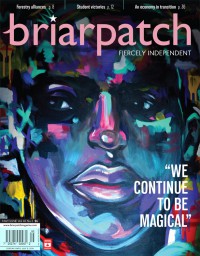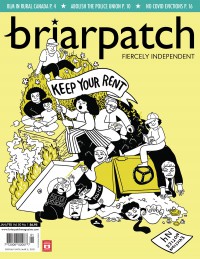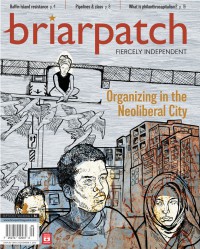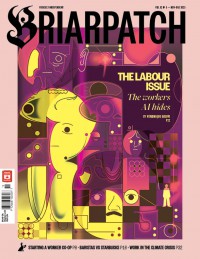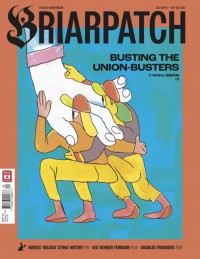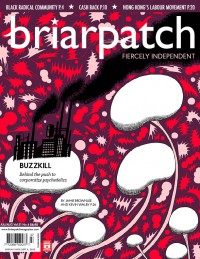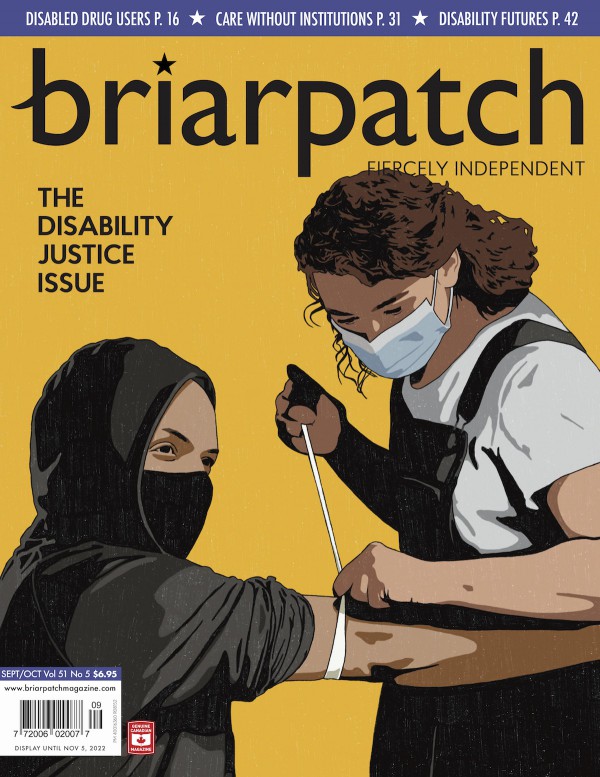
The Disability Justice Issue
Our special 56-page Disability Justice issue features writing and art from disability justice activists across Canada. Inside, you'll find an article about drug use and the criminalization of disabled life, an interview about war and debility, a roundtable on long COVID, food reviews from inside institutions, a discussion about disabled sex, reflections on the future of the movement, kids' reviews of a childrens' book about accessibility, and more.
Add To Cart $6.95
-
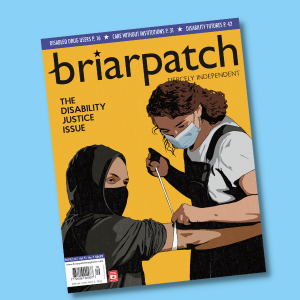 Magazine
MagazineDisabled leadership and wisdom
When we say we want disability justice, we don’t just mean wheelchair-accessible buildings and sign-language interpretation. We mean an end to the systems and structures that disable and debilitate us and a future where there is enough care, community, and support for everyone to thrive.
-
 Magazine
MagazineWhat is disability justice?
Members of the Disability Justice Network of Ontario’s Youth Action Council discuss the present and future of the disability justice movement.
-
 Magazine
MagazineDisability and war
Across the world, people are disabled in vast numbers by war, occupation, and imperial violence. How can disability justice confront the U.S. and Canadian war machines?
-
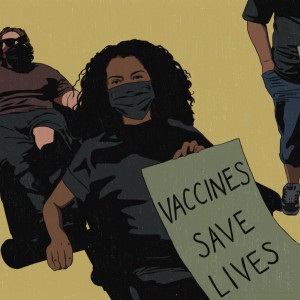 Magazine
MagazineTerry Fox, the Freedom Convoy, and disability politics
Terry Fox is the most famous disabled person in Canadian history, a figure who “united the country” during his cross-country marathon. Now, Fox’s iconography is being used to support the Freedom Convoy’s anti-vaccine, anti-mask agenda. What kind of unity does Fox really represent?
-
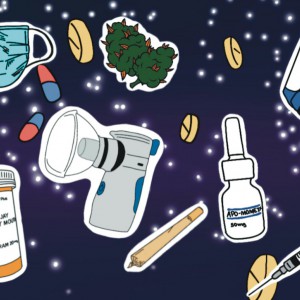 Magazine
MagazineWhat we need to be well
There’s a big overlap between communities of disabled people and illicit drug users. A safe supply of drugs should be considered a fundamental part of disability justice.
-
 Magazine
MagazineWalking with my mother
In 2017, my mother was diagnosed with Alzheimer’s. The city she once navigated with ease became dangerous and confusing, and I learned that it was worsening her symptoms. As a daughter and an urban planner, I wondered: what would a city built for disabled people’s safety and ease look like?
-
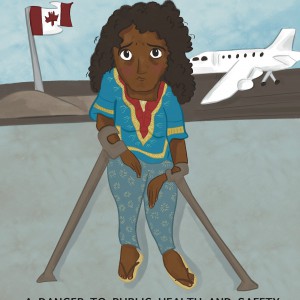 Magazine
MagazineMigration has always been a disability justice issue
An interview with Ameil Joseph about the history and present of Canada’s discriminatory treatment of disabled migrants
-
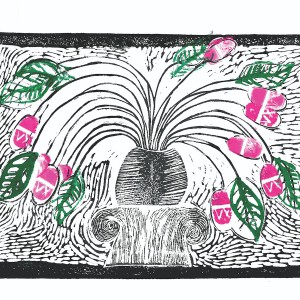 Magazine
MagazineThe pressure to be cured
Both professional and popular psychology are focused on “curing” individuals of distress. But without looking at a person’s social and political context, the pursuit of a cure can do more harm than good.
-
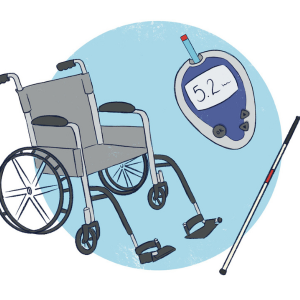 Magazine
MagazineCare without institutions
Four case studies of projects that are meeting disabled people’s needs through community care.
-
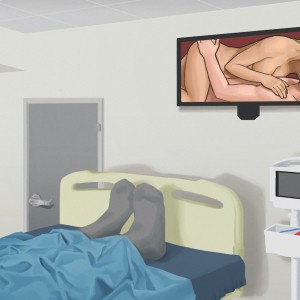 Magazine
MagazineFighting for the right to fuck
For more than a century, eugenicists have tried to eliminate disabled people through sexual sterilization. Today, disabled people’s sex lives are still surveilled, suppressed, and punished in institutions.
-
 Magazine
Magazine“We are fed the same way caged animals are”
To understand what life is like along the “continuum of confinement,” three people living in prisons and long-term care homes share the food they have eaten and eat every day.
-
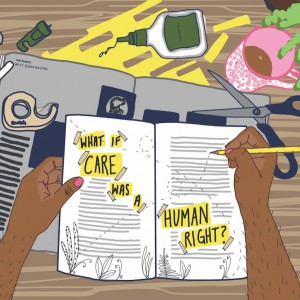 Magazine
Magazine“There are disabled people in the future”
An interview with Leah Lakshmi Piepzna-Samarasinha about “crip doulaing,” the future of the disability justice movement, and understanding access and care as joyful.
-
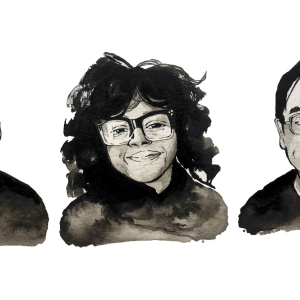 Magazine
MagazineRoundtable on long COVID in Canada
Three people living with long COVID discuss government responses to the pandemic, what doctors need to know, and how people can support long haulers.
-
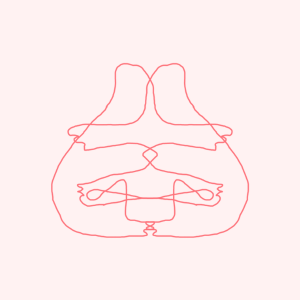
-
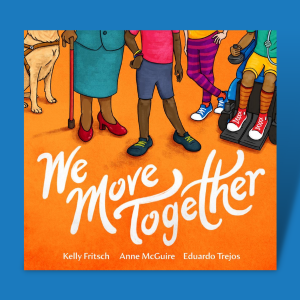 Magazine
MagazineKids review “We Move Together”
Five kids, from ages 6 to 13, review “We Move Together”, a children’s book about disabled people navigating their neighbourhoods and making friends along the way.

